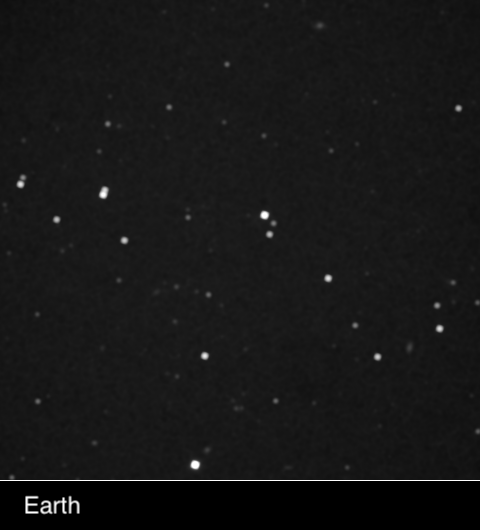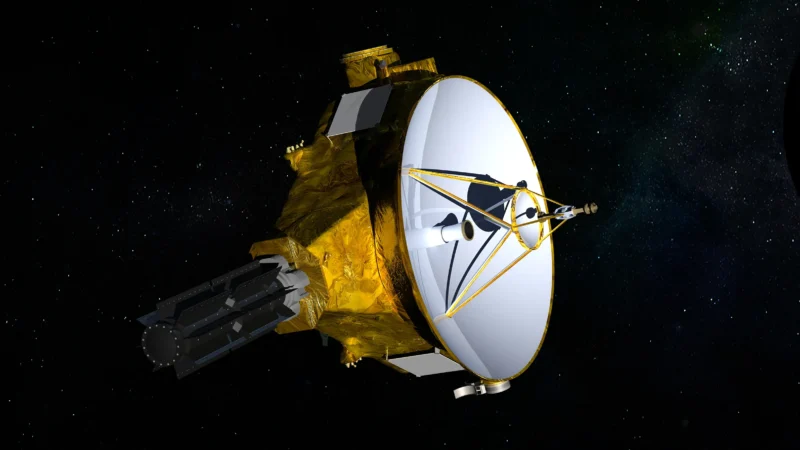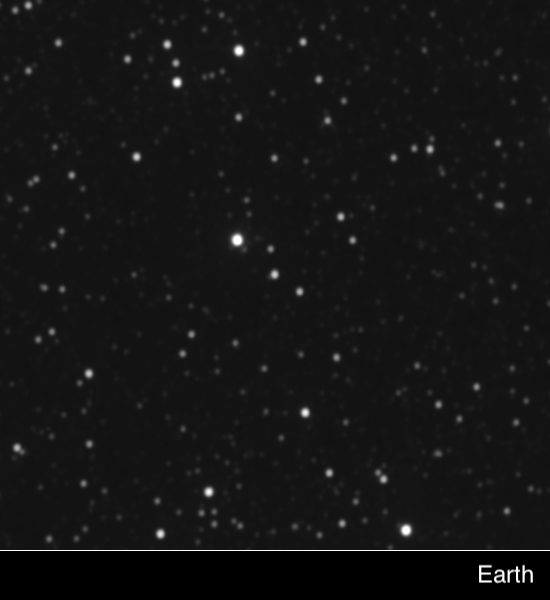Introduction
Whipple’s disease, first described by George Whipple in 1907, is a chronic systemic infection caused by the gram-positive bacterium Tropheryma whipplei, a member of the Actinomycetota phylum.1 Although classically characterized by gastrointestinal involvement, extraintestinal manifestations—such as arthralgia, central nervous system disorders, and endocarditis—have been increasingly recognized.2
Severe infections caused by T. whipplei, including endocarditis, meningitis, and pneumonia, though uncommon, can be life-threatening and require prompt diagnosis and treatment. Pulmonary involvement is particularly rare and often presents with nonspecific respiratory symptoms, contributing to delays in diagnosis.
Given this rarity and clinical ambiguity, pulmonary infection with T. whipplei may be misdiagnosed, especially in immunocompetent individuals. Delayed recognition can result in disease progression to acute respiratory distress syndrome (ARDS), increasing the risk of adverse outcomes. Early use of molecular diagnostic tools such as metagenomic next-generation sequencing (mNGS) can be critical for accurate identification and timely intervention.Here, we report a rare case of ARDS caused by T. whipplei in an immunocompetent young adult, confirmed by mNGS of bronchoalveolar lavage fluid, and provide a comprehensive review of the literature.
Case Presentation
A 28-year-old man presented to the emergency department with a 4-day history of progressive dyspnea, productive cough with purulent sputum, and fever (39.6°C). The patient has a clear history of aspiration, with symptoms beginning after occupational exposure to wastewater, initially manifesting as mild fatigue and a nonproductive cough. He self-administered febuxostat and over-the-counter combination tablets containing paracetamol and amantadine hydrochloride, without clinical improvement. A chest CT performed at a local hospital revealed bilateral patchy and flocculent opacities in both lungs (Figure 1A–C). The patient had no notable past medical history, including no history of autoimmune diseases (eg, rheumatoid arthritis), chronic infections, malignancies, or use of immunosuppressive agents. Immunologic evaluation revealed normal lymphocyte subsets, including CD3+, CD4+, and CD8+ T cells, with a normal CD4/CD8 ratio. Serum immunoglobulin levels (IgG, IgA, and IgM) were also within normal limits, indicating no evidence of immunodeficiency. Due to worsening hypoxemia, he was transferred to our tertiary care center for advanced management.
|
Figure 1 Chest CT scans. (A–C) Images on hospital day 1 showing bilateral patchy opacities. (D–F) Images after 3 weeks of treatment showing resolution of pulmonary exudates.
|
On admission, the patient exhibited severe respiratory distress (SpO₂: 91% on room air). Laboratory findings included leukocytosis (12.33 × 10⁹/L; 96.30% neutrophils), elevated C-reactive protein (256 mg/L), and procalcitonin (2.2 ng/mL). Arterial blood gas analysis demonstrated severe hypoxemia (PaO₂/FiO₂ ratio: 118). Repeat chest CT showed bilateral ground-glass opacities and consolidations, predominantly in the lower lobes, consistent with ARDS. High-flow nasal cannula (HFNC) oxygen therapy was initiated, and empiric antimicrobial therapy with meropenem (2 g every 8 hours), azithromycin (500 mg daily), and levofloxacin (750 mg daily) was administered.
Despite these interventions, the patient developed worsening hypoxemia (PaO₂/FiO₂ ratio: 69) and delirium, necessitating mechanical ventilation with lung-protective strategies and prone positioning. Bronchoscopy revealed hyperemic bronchial mucosa with submucosal hemorrhages and scant white secretions. Bronchoalveolar lavage fluid (BALF) was sent for microbiological analysis, including NGS. Antifungal (caspofungin: 70 mg loading dose, then 50 mg daily) and antiviral (oseltamivir: 75 mg twice daily) therapies were added empirically, alongside sivelestat sodium (0.2 mg/kg/hour) to attenuate pulmonary inflammation. Sedation was achieved with sufentanil (0.1 µg/kg/hour) and midazolam (2 mg/hour), with neuromuscular blockade using atracurium (5 µg/kg/minute).
A diagnostic breakthrough occurred on hospital day 5 when metagenomic next-generation sequencing (mNGS) of bronchoalveolar lavage fluid (BALF), performed using the IDseq™ Ultra platform (Vision Medicals, China), detected Tropheryma whipplei DNA with 12,373 sequence reads, confirming Whipple’s disease-associated ARDS. A low abundance of Staphylococcus aureus (69 sequence reads) was also identified but was deemed clinically insignificant due to the low read count and lack of supporting clinical or microbiological evidence. Antimicrobial therapy was subsequently revised to intravenous ceftriaxone (2 g daily) and sulfamethoxazole-trimethoprim (SMZ-TMP; 15 mg/kg/day of the trimethoprim component). Follow-up blood cultures grew Staphylococcus epidermidis, prompting a switch from linezolid to vancomycin (15 mg/kg every 12 hours).
Over the following week, the patient’s oxygenation improved (PaO₂/FiO₂ ratio: 212), allowing gradual weaning from mechanical ventilation to HFNC on hospital day 18. Inflammatory markers normalized, with procalcitonin decreasing to 0.3 ng/mL and C-reactive protein dropping to 8 mg/L prior to discharge. The patient’s body temperature returned to normal (<37.5°C) within 72 hours after the initiation of targeted antibiotic therapy. He was subsequently discharged on day 28 with a planned 12-month course of oral SMZ-TMP. Follow-up CT demonstrated significant resolution of pulmonary exudates (Figure 1D–F).
Discussion
Whipple’s disease (WD) is a rare, multisystemic infection that poses diagnostic challenges due to its protean manifestations. While pulmonary involvement is uncommon, this case illustrates a life-threatening presentation of WD as ARDS. Although WD typically affects immunocompromised hosts, this patient had no known immunosuppression, aligning with prior reports of WD in immunocompetent individuals exposed to environmental reservoirs.
The nonspecific respiratory symptoms and radiographic findings in pulmonary WD—such as bilateral consolidations and ground-glass opacities—often mimic more common etiologies (eg, bacterial pneumonia, COVID-19).3 Conventional diagnostic methods, including cultures and serology, frequently fail to identify Tropheryma whipplei, as exemplified here. NGS emerged as a pivotal tool, enabling rapid pathogen identification and timely therapeutic adjustment. This underscores the growing role of molecular diagnostics in managing critically ill patients with atypical presentations.
First-line therapy for WD involves prolonged antibiotic regimens to prevent relapse. Intravenous ceftriaxone (2–4 weeks) followed by oral SMZ-TMP (12 months) remains the cornerstone of treatment.4 In this case, SMZ-TMP’s efficacy was evident, with rapid clinical improvement after its initiation. However, emerging reports of SMZ-TMP resistance highlight the need for alternative regimens (eg, Meropenem combined with SMZ -TMP) in refractory cases.5,6
These cases in the table elucidate the similar clinical manifestation and the evolution of the cases in the literature. Patients’ ages ranged from 26 to 62, with a median of 39 years. SMZ-TMP was a consistent component of the antimicrobial regimen across most cases, emphasizing its efficacy as a cornerstone drug for treating Tropheryma whipplei infections.5–9 This reflects its well-documented ability to inhibit Tropheryma whipplei growth and its broad-spectrum activity. Intravenous ceftriaxone is currently recommended as part of the initial treatment phase for rapid control of systemic infection, and Trimethoprim-sulfamethoxazole (SMZ-TMP) was then recommended as primary oral maintenance therapy for at least 1 year.3 However, Cases of resistance to SMZ-TMP have been documented, prompting the need for alternative or combination therapies (Table 1).10
 |
Table 1 Cases of Resistance to SMZ-TMP
|
Limitations
This case report has several limitations. First, while conventional diagnostic methods failed to identify the causative pathogen, the definitive diagnosis relied on metagenomic next-generation sequencing (mNGS), underscoring the limited sensitivity of traditional microbiological tools in detecting Tropheryma whipplei. Second, although the patient was considered immunocompetent based on medical history, a detailed immunological workup was performed and only included basic parameters such as lymphocyte subset analysis and immunoglobulin levels; more comprehensive immune profiling was not conducted. Third, the lack of long-term follow-up data precludes assessment of potential disease relapse or chronic sequelae. These factors should be addressed in future studies to better understand the pathophysiology and management of T. whipplei-associated ARDS. Furthermore, given the potential for central nervous system (CNS) involvement in Whipples’ disease, long-term follow-up is essential. Although our patient showed no neurological symptoms during hospitalization, future monitoring for CNS relapse or delayed complications remains clinically important.
Conclusion
This case highlights the indispensable role of advanced molecular diagnostics, particularly next-generation sequencing, in identifying rare and atypical pathogens such as Tropheryma whipplei in critically ill patients with ARDS. Timely and precise pathogen detection enables targeted therapy, significantly improving patient outcomes even in severe and life-threatening conditions. Importantly, this report underscores the necessity of considering Tropheryma whipplei as a potential etiology of ARDS, even in immunocompetent individuals, especially when conventional diagnostic approaches fail.
The therapeutic challenge posed by emerging resistance to standard regimens, such as trimethoprim-sulfamethoxazole, further highlights the need for ongoing research into alternative or combination antibiotic therapies. Future studies should aim to deepen our understanding of the pathophysiological mechanisms underlying Tropheryma whipplei-induced pulmonary involvement and refine clinical guidelines for the diagnosis and management of such cases. By integrating cutting-edge diagnostics with personalized therapeutic strategies, clinicians can advance the care of patients with rare and complex infectious diseases in critical care settings.
Ethics Approval Consent to Participate
This study has been reviewed and approved by the First Affiliated Hospital of Dalian Medical University. The patient provided informed consent for publication of the clinical details and written informed consent was obtained. Written informed consent was provided by the patient for the publication of the case details and images. Details of the case can be published without institutional approval.
Consent to Publish
The study participant gave consent to publish.
Author Contributions
All authors made a significant contribution to the work reported, whether that is in the conception, study design, execution, acquisition of data, analysis and interpretation, or in all these areas; took part in drafting, revising or critically reviewing the article; gave final approval of the version to be published; have agreed on the journal to which the article has been submitted; and agree to be accountable for all aspects of the work.
Funding
This study did not receive any funding.
Disclosure
The authors declare that they have no competing interests in this work.
References
1. Wilson KH, Blitchington R, Frothingham R, Wilson JA. Phylogeny of the whipple’s-disease-associated bacterium. Lancet. 1991;338(8765):474–475. doi:10.1016/0140-6736(91)90545-z
2. Patil S, Fantry GT. Connecting the dots: the many systemic manifestations of whipple disease. Gastroenterol Hepatol (N Y). 2012;8(1):63–66.
3. Lagier JC, Fenollar F, Raoult D. Acute infections caused by tropheryma whipplei. Future Microbiol. 2017;12(3):247–254. doi:10.2217/fmb-2017-0178
4. Dolmans RA, Boel CH, Lacle MM, Kusters JG. Clinical manifestations, treatment, and diagnosis of tropheryma whipplei infections. Clin Microbiol Rev. 2017;30(2):529–555. doi:10.1128/CMR.00033-16
5. Deng Y, Zhang H, Lu J, Zhou Z, Zhang T, Cui X. Whipple’s disease of the respiratory system: a case report. Exp Ther Med. 2024;27(4):133. doi:10.3892/etm.2024.12421
6. Li W, Zhang Q, Xu Y, Zhang X, Huang Q, Su Z. Severe pneumonia in adults caused by Tropheryma whipplei and Candida sp. infection: a 2019 case series. BMC Pulm Med. 2021;21(1):29. doi:10.1186/s12890-020-01384-4
7. Zhu B, Tang J, Fang R, et al. Pulmonary coinfection of mycobacterium tuberculosis and tropheryma whipplei: a case report. J Med Case Rep. 2021;15(1):359. doi:10.1186/s13256-021-02899-y
8. Shan X, Li Z, Dong L. A case of pneumonia caused by infection with tropheryma whipplei complicated by cryptococcus during treatment with a Janus kinase inhibitor: a case report. BMC Pulm Med. 2024;24(1):625. doi:10.1186/s12890-024-03401-2
9. Lu Z, Zhang A, Guo J, Ni H. An unusual case of severe pneumonia caused by Tropheryma whipplei combined with Legionella pneumophila. World J Emerg Med. 2023;14(6):492–494. doi:10.5847/wjem.j.1920-8642.2023.095
10. Bakkali N, Fenollar F, Biswas S, Rolain JM, Raoult D. Acquired resistance to trimethoprim-sulfamethoxazole during Whipple disease and expression of the causative target gene. J Infect Dis. 2008;198(1):101–108. doi:10.1086/588706
11. Zhang WM, Xu L. Pulmonary parenchymal involvement caused by Tropheryma whipplei. Open Med. 2021;16(1):843–846. doi:10.1515/med-2021-0297
















